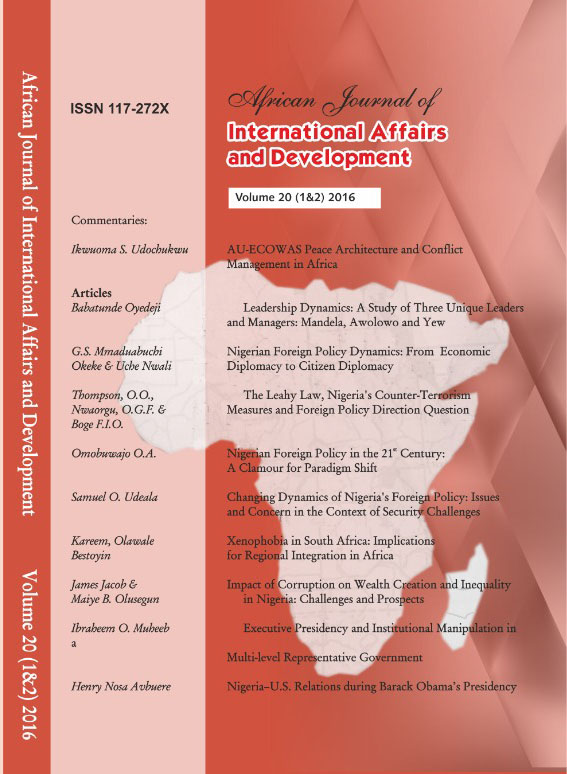AU-ECOWAS Peace Architecture and Conflict Management in Africa
AU-ECOWAS Peace Architecture and Conflict
Keywords:
.Abstract
One basic challenge that confronted African states immediately after independence was the management of conflict and
peace building. While African states have tried to develop capacity in several areas of their socio-economic, political and
security life, gaps, still exist between the nature of conflict confronting the region and the institutional framework for conflict
management. At first glance, neither the concept of security communities nor any of the other concepts of security
cooperation currently in the academic discourse, such as regional security complex, regional security partnerships or zones
of peace, seem applicable to Africa’s emerging peace and security architecture. On the contrary, the continuing presence of
violent conflict and humanitarian catastrophes in wide parts of the continent, such as in the Democratic Republic of the
Congo (DRC), the Sudan, the Central African Republic, Chad and Somalia, has reinforced many people’s impressions of Africa
as a continent characterized by quasi-Hobbesian anarchy rather than elaborate forms of security cooperation based on a
communality of values. The realization of the change in conflict dimension in Africa and its attendant consequences and the
less concern by international community led African leaders to consider some of the guiding principles, structure, designs
and policies on conflict management. Consequently, the principle of non-interference and respect for territorial integrity of
states were revisited and challenged. The process began with the transformation of Organization of African Unity (OAU) to
African Union (AU). By the emergence of African Union, the core objective of promotion of peace, stability and security in
the continent changed to non-indifference rather than non-interference. This research investigated AU-ECOWAS peace and
security architecture and management of conflict in Africa. The aim of the study is to understand the AU-ECOWAS peace
and security architecture; to examine the application of the AU-ECOWAS peace architecture in management of conflict in
Africa; and to investigate the challenges of conflict management in Africa using the AU-ECOWAS peace architecture. The
study found that: The Protocol that created the PSC establishes two primary diplomatic ways to achieve the APSA strategic
goals: preventive diplomacy and peacemaking. Hence, it recommends that: African leaders should develop stronger political
will to intervene in conflict areas. Political will is absolutely vital to operationalize all mechanisms of the AU-ECOWAS peace
and security architecture. Develop a balance relationship for conflict management at the sub-regional and continental
levels. Emphasis should be placed on security especially human security in Africa

